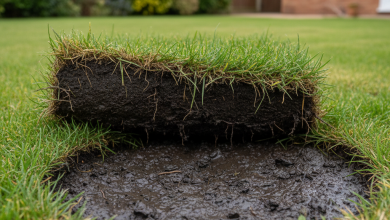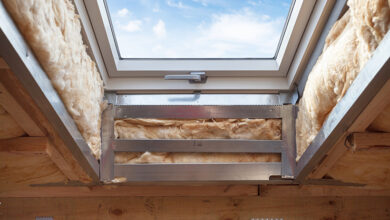Gutters, like every other feature of a house, are essential to keeping it in good condition. They collect and carry rainwater away from the house and prevent leaky roofs and damp basements. But, they’re often neglected unless something goes wrong with them.
Not having gutters, or having gutters that don’t work properly, can damage the siding and trim of a house. Water can get into basements, causing irreparable damage, and heavy rainfall could even wash away soil leading to erosion.
So how can you install gutters in a way that extends their longevity?

1. Choose the right type of gutter
Every house has unique requirements. That’s why customising your gutters according to the needs of the house is essential before they’re fitted. You need to assess the size of your home, the pitch of the roof, and the type of rainfall you get where you live.
With those findings in mind, you can choose from half-round gutters, K-style gutters, or fascia gutters. Next, choose the desired material – aluminium, copper, galvanised steel, zinc, or vinyl. Make sure that the gutters are steep enough to collect the rainwater and allow it to flow to the downspouts.
2. Select an ideal gutter size
The amount of rainfall any area receives and the steepness of the roof pitch play a major role in determining the size of the gutters. You should also keep an eye out for snow and ice accumulation in the gutters – because you can also install heated gutter systems.
3. Space the gutter hangers at proper distances
Place the gutter hangers in a way that they provide adequate support to the gutter. This makes sure that your gutters are not weighed down or sagging. Ideally, the hangers should be placed at a maximum distance of three feet from each other. But if you get heavy rainfall or snowfall, you should place the hangers at a distance of two feet from each other.
4. Go for seamless gutters
The weakest points of any gutter system are its seams – gaps can appear in the places where the sections meet, which can increase the chance of leaks. Debris can also get accumulated in these gaps, which could lead to overflowing gutters when there’s a lot of rain. Gutters with seams need a lot of maintenance, whereas seamless gutters are less prone to leaks and do not require much maintenance.
5. Install guards
Guards keep your gutters free of any kind of debris like leaves, sticks, birds’ nests, pine needles, or dirt, and therefore keep it free from mould and rust. They also ensure the gutters are intact and don’t need frequent cleaning and maintenance.

6. Prune the trees
Trees can damaged gutters beyond repair. They shed leaves, sticks, pine needles, flowers, or acorns onto the house roof which in turn get deposited in the gutters, if not properly cleaned. In heavy rain or a thunderstorm, the trees themselves can damage the roof and gutters. So, you should prune the trees regularly.
7. Clean gutters regularly
The last but most important way of ensuring longer gutter life is regular cleaning and maintenance. Make sure that you clean the gutters once every three or six months depending on the tree coverage and the weather. Keep a check on the downspouts as well.

Leave it to the professionals
DIY gutter installation is popular but you could end up spending money on replacements and repair costs in the long run if you don’t do it correctly.
Gutter cleaning services offer expertise in maintenance to save you the worry. You can find a plumber who offers guttering and rainwater pipe services with Rated People.
Author bio:
Kruti Shah is a content writer for Ned Stevens. She loves to write about insights on current trends in smart homes and related technology. In her free time, she loves baking and watching Netflix. You can connect with her on Linkedin.




